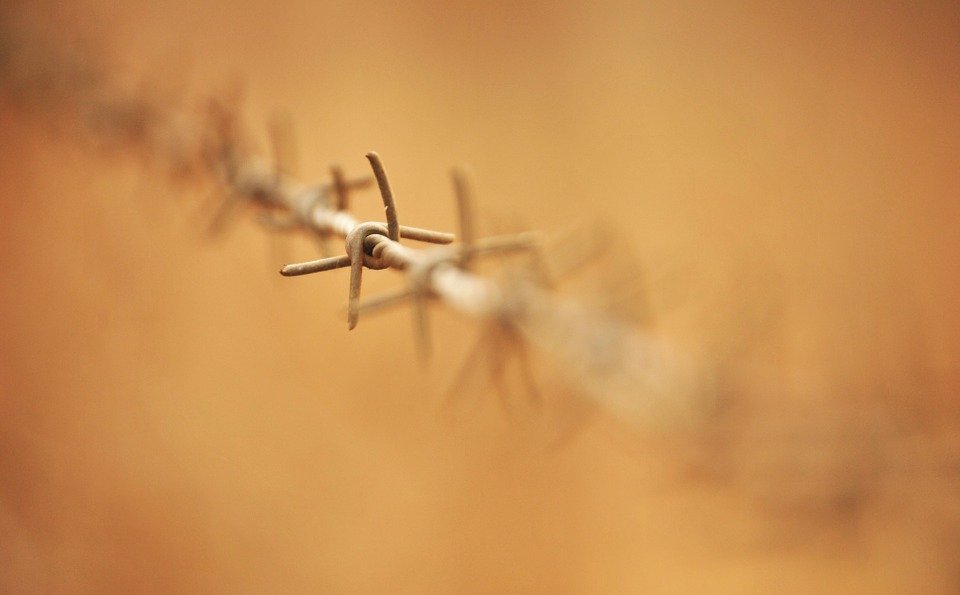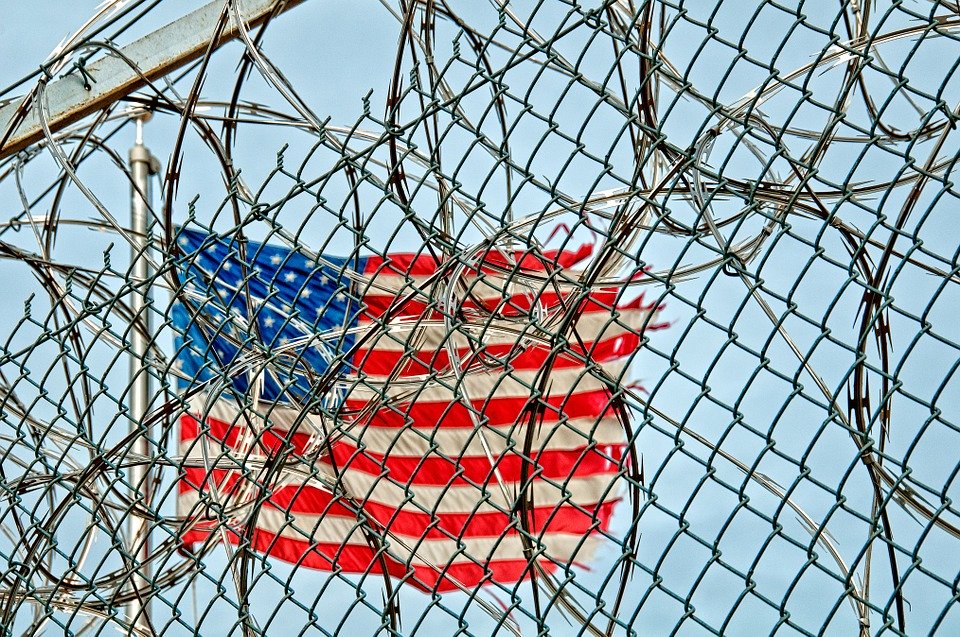On Fences: A Collage
Fences fulfill many different functions. They divide and isolate the land to demarcate private property. They demarcate socio–natural divides as in national forests that enclose (and aim at protect) nature; and affect animal habitats (other than human ones). Fences are well known as tools for demarcating countries, although not all national borders are demarcated by fences—which makes one question the materiality of the fence/border. They lock people in (prisoners) or out (immigrants).
The border is a wall
of barbed lies, a sight
of chains, a pounding heart,
a fresh wound on an old heart.
Gina Valdés, The Border1
Reviel Netz’s Barbed Wire offers reflections on that particular kind of fencing, and its historical consequences, for both humans and domestic grazing animals.2
With a closed line (i.e. a curve enclosing a figure), and the prevention of motion from outside the line to its inside, you derive the idea of property. With the same line and the prevention of motion from inside to outside, you derive the idea of prison. With an open line (i.e., a line that does not enclose a figure) you derive the idea of border. Properties, prisons, borders: it is through the prevention of motion that space enters history.3
Wire Fencing: for enclosing railroads, canals, fields, cattle pastures, cemeteries, gardens, henneries, and for ornamental garden work, grape and rose trellises, etc.
Advertisement 1865
A setting such as Berlin, where the Anthropocene Campus 2014 took place, also added its own history of fences (the Berlin Wall) to the background of this project. We found fences to be directly connected to the very nature (and implications) of the Anthropocene.
A couple of questions arose: Are fences necessarily negative? Could fence-dependent human cultures/societies be reshaped so that human beings could do without them?
With this project we consider “slow” means of deconstructing, analyzing, and rebuilding fences through a series of case studies: the types/roles of fences in the US Southwest, in Patagonia, in the Arctic, as oil pipes in Nigeria, and as hedges in both private and public spaces.


